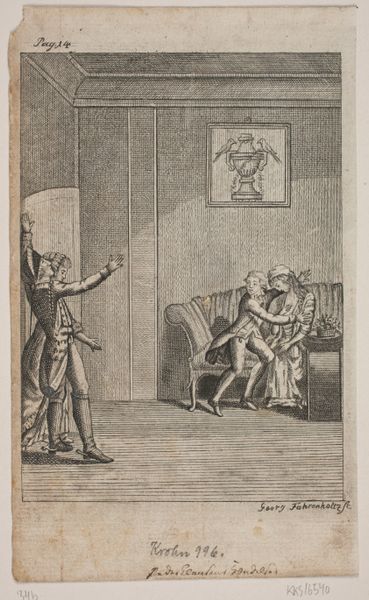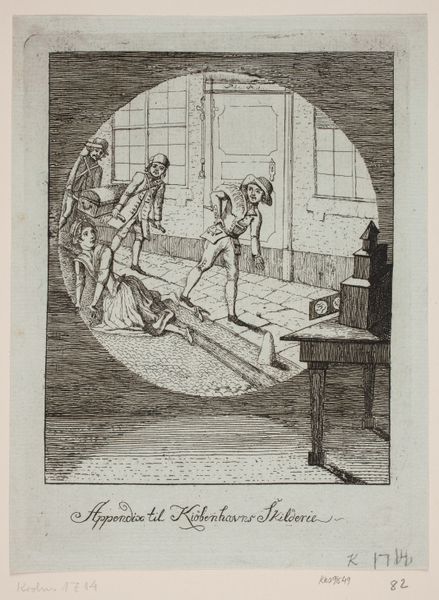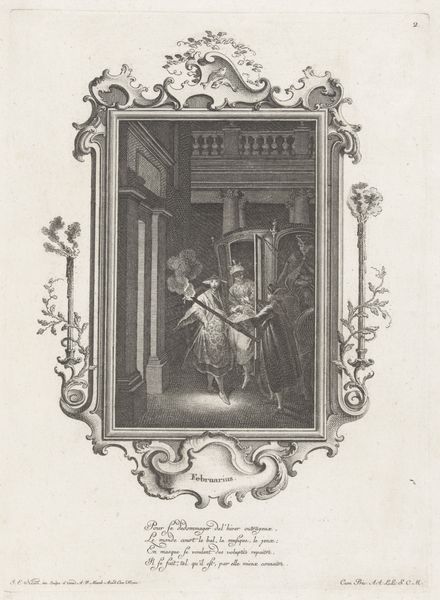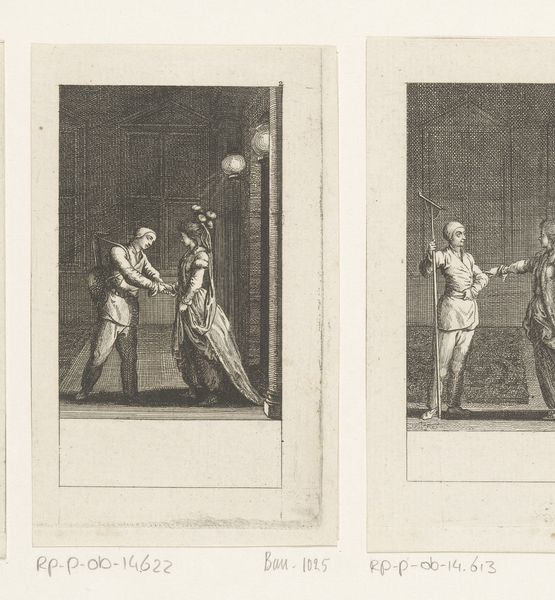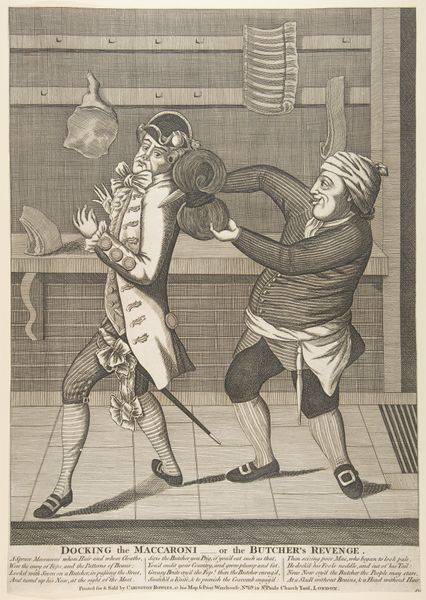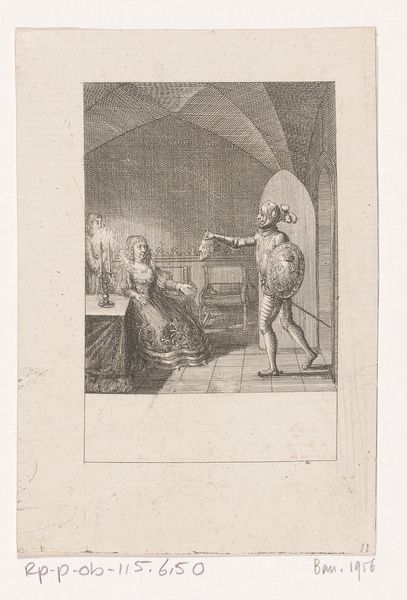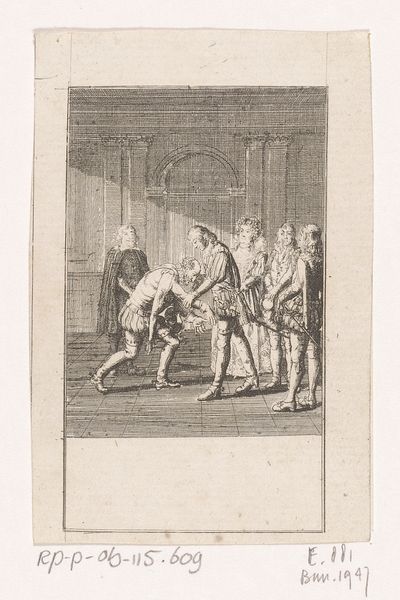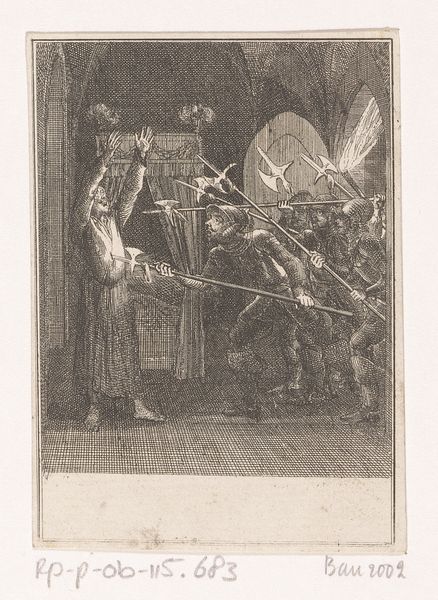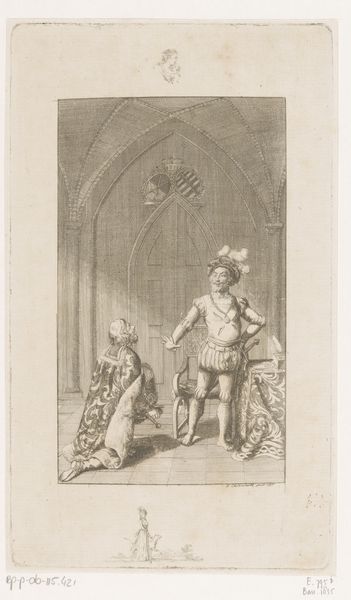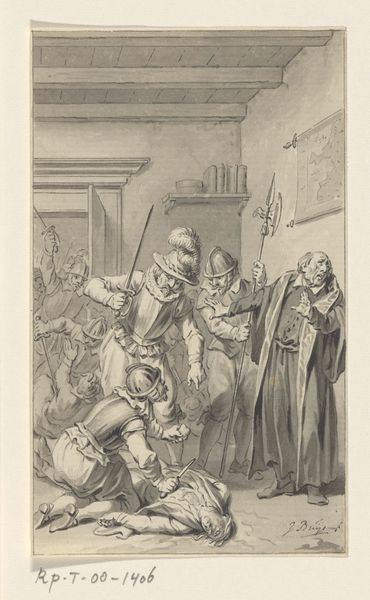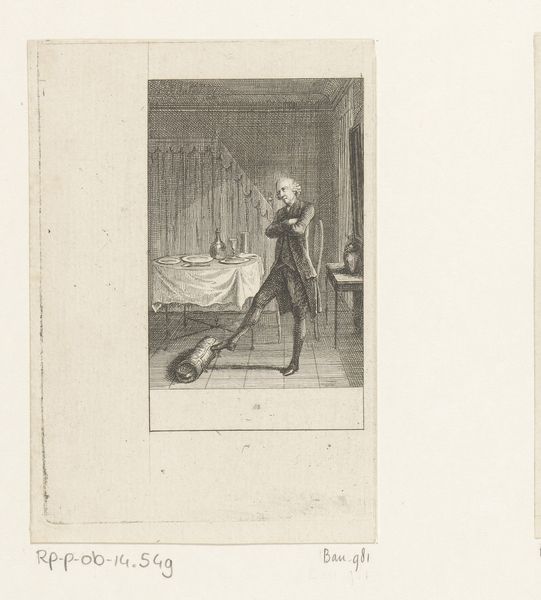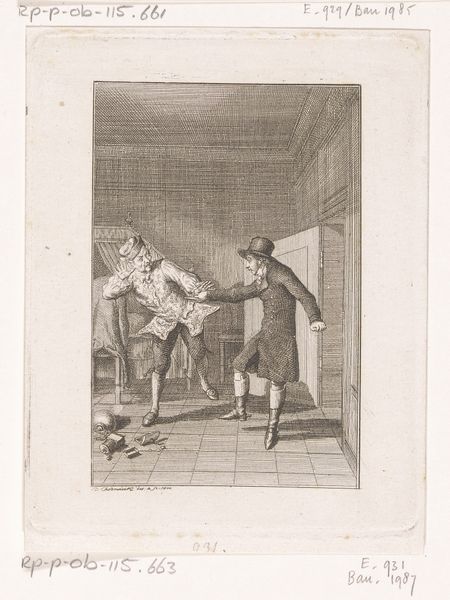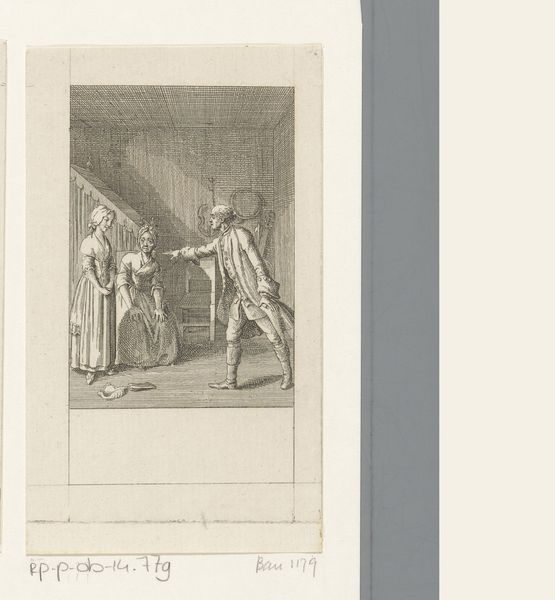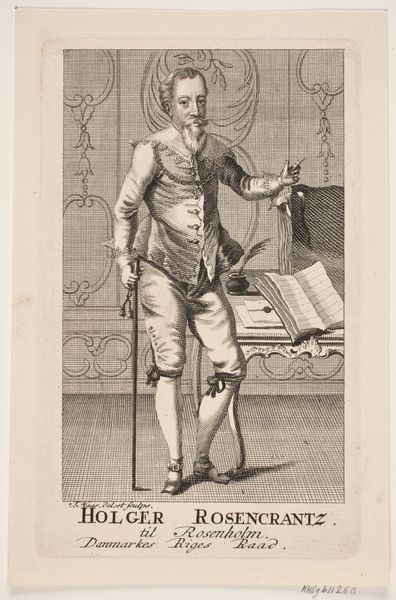
print, engraving
#
portrait
#
narrative-art
# print
#
figuration
#
momento-mori
#
romanticism
#
history-painting
#
engraving
Dimensions: 155 mm (height) x 90 mm (width) (bladmaal)
Editor: So, this is "Illustration med ung mand og skelet" from 1799 by Georg Christian Schule, an engraving currently housed in the SMK. It's a pretty stark image – this startled young man holding a candle, face-to-face with a skeleton in a doorway. It definitely evokes a sense of drama. What do you make of it? Curator: Well, viewed through a historical lens, this print speaks volumes about the cultural anxieties prevalent during the Romantic era. We see a fascination with death and mortality, characteristic of the *memento mori* tradition, but also tinged with a sense of theatricality. Consider how the 'public role' of such images was often didactic, serving as moral allegories. What's particularly striking to you about the setting? Editor: I guess it's the unexpectedness of it all – the wallpaper gives a feeling of domesticity, but then death appears right in your doorway. It's kind of like a home invasion, but by your own mortality! Curator: Precisely! It disrupts the comfortable bourgeois interior, forcing an encounter with something usually kept at bay. Think about the social function of art in visualizing abstract concepts like death. It wasn't just personal contemplation; these images circulated widely, shaping public discourse around these themes. How might the act of publishing this piece shape and distribute its interpretation to its contemporary audience? Editor: That's fascinating! It goes from a personal confrontation with death to a shared cultural experience. I initially thought of it as this very private, individual terror, but its dissemination as a print completely changes its meaning. Curator: Indeed. The politics of imagery during this period were often intertwined with notions of morality and social order. The image becomes a stage upon which personal anxieties meet broader societal concerns about life, death, and what it means to be a responsible individual within a rapidly changing world. It invites a consideration of how cultural objects negotiate with both the private and the public domains. Editor: I never really thought about how the medium itself plays such a big role. It’s more than just the image – it’s also how the image is consumed by a community! Curator: Exactly. It reframes the entire reading, doesn't it?
Comments
No comments
Be the first to comment and join the conversation on the ultimate creative platform.
